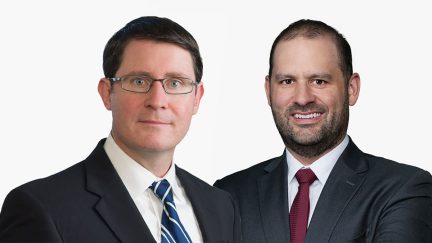For more stories like this, sign up for the PLANSPONSOR NEWSDash daily newsletter.
(b)lines Ask the Experts – Prudently Monitoring Legacy Vendor Contracts
“The plan committee decided to conduct an RFP, and we have a brand new vendor relationship with which we could not be happier. However, the old investments are in individual contracts that can only be moved at the individual direction of each participant. We monitor both the old and new investment as part of our due diligence, but the monitoring of the old funds seems pointless as we cannot move funds out of any investment in the old contract as a plan sponsor, no matter whether the investment violates our Investment Policy Statement or not, and no matter how poorly the investment performs. Is there any additional action that we should be taking as fiduciaries with respect to these investments with the prior provider?”
Michael A. Webb, Vice President, Retirement Practice, Cammack LaRhette Consulting, answers:
This is a common problem when a plan sponsor migrates from an older investment platform to a newer one in 403(b) plans, and, alas, there is not an easy answer. The Department of Labor (DoL) does consider the frozen vendor assets to be plan assets to which the fiduciary standards of the Employee Retirement Income Security Act (ERISA) apply (note that, the pre 1/1/09 contract grandfathering currently only exempts such assets from 5500 reporting and disclosure, and not the other provisions of ERISA, though this could change in the future). Thus, though you are prudent in monitoring the old provider funds; ironically a situation is created where you may clearly identify that a frozen fund or funds are imprudent investments, but corrective action is not taken because you are unable to do so as a plan sponsor, and from other contexts we know that uncorrected defects, in general, can create plan liability issues.
One suggestion to minimize any potential issues is regularly communicating to the participants in these plans that, though it is their right to retain the prior provider investments, it is also their right to consider transferring their funds via a contract exchange to the new investment arrangement to which all current and future contributions are being directed. This will minimize the possibility of a participant experiencing poor performance in the frozen contract and then attempting to claim against the plan, since he/she would have been regularly informed of his/her right to transfer existing assets to the new investment platform. In fact, there is an excellent opportunity to craft such a communication in conjunction with the upcoming participant fee disclosure requirements, since the disclosure documents will identify the costs and investment performance of the old and new provider investments. However, in crafting such communication, one should work closely with benefits counsel well versed in 403(b) issues to make certain that the plan sponsor is not providing investment advice to the participants.
And, as always, you should consult with benefits counsel to discern whether there are additional action steps you may take in the case of your specific plan that might be prudent as well.
NOTE: This feature is to provide general information only, does not constitute legal advice, and cannot be used or substituted for legal or tax advice.


